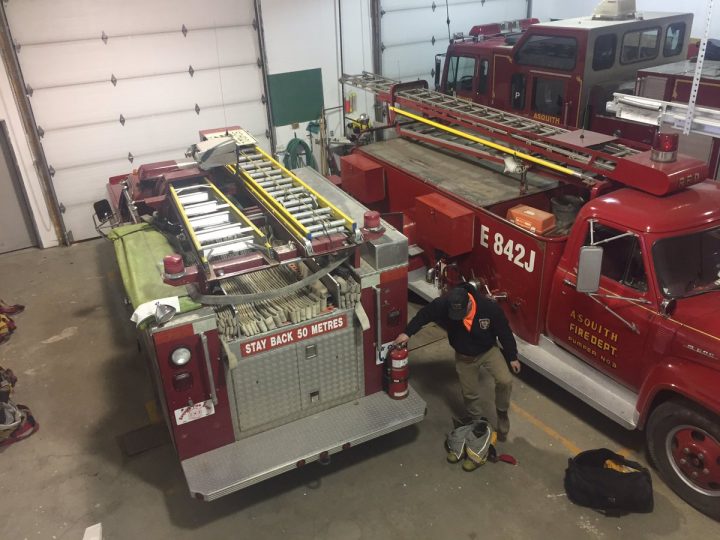With farms few and far between and call volumes on the rise, volunteer fire departments in the province say they are stretched thin.

This is prompting renewed calls from the president of the Saskatchewan Association of Rural Municipalities (SARM) for Ottawa to step in and establish a fund to help fire departments that feel they’re on the end of a losing battle.
Both the captain and fire chief in Asquith say their department is one that could desperately use more funds to alleviate pressures that have already begun to boil over.
READ MORE: Community fire departments in need of volunteers
Like most small towns in Saskatchewan, the department relies on everyday heroes to volunteer their time and respond to whatever comes their way.
“A volunteer firefighter in Asquith is on-call 24 hours a day, seven days week unless he takes himself out of service because he’s going to be away,” fire Chief Colin Graham said.
The department consists of 11 members and a dispatcher. At one time they operated with a crew of 18.
Approximately 80 per cent of calls they respond to are outside of town limits, as they border four rural municipalities and the area they cover is 600 square kilometres.
“There’s highways, there’s grid roads, there’s acreages, there’s farms and it’s just been getting busier,” Capt. Blaine Ganchar said.
READ MORE: Synergy 8 reveals new pediatric ambulance for young Sask. patients
Highway traffic volumes on the edge of town have reached 4,000 motorists a day – 1,400 more since 2006. Last year, the fire department was called out to 18 motor vehicle collisions compared to one in 2005.
In total, firefighters responded to 50 in 2016, a tenfold increase from 11 years prior.
“Total expenses are $38,000 and we usually run about a $12,000 to 14,000 deficit every year so the town is covering that deficit.”
They bill outside RM’s for service provided per hour on a call-out and despite their deficit, the crew has never refused to respond to a call using trucks that are at least 30 years old.
Earlier this week, SARM president Ray Orb expressed concerns over the affordability of local fire departments and is lobbying the feds to create an emergency response fund.
“If the federal government agrees – it will actually be a fund that’s set up for our fire departments and the towns and villages so they could go onto First Nations, onto reserve and be able to fight a fire,” Orb said.
“They would be covered, they will have the liability protection and they will have guaranteed payment.”
In 2015, two children perished in a house fire on the Makwa Sahgaiehcan First Nation after the nearby Loon Lake Fire Department didn’t respond because the First Nation owed them three-thousand dollars.
READ MORE: Fire services restored on Makwa Sahgaiehcan First Nation
It is hoped this new federal fund could possibly prevent such tragedies from ever happening again, anywhere in the province.
“Any voice we can get, how can that be wrong,” Graham said.
“We need all the help we can get so we can protect these people that need help.”




Comments